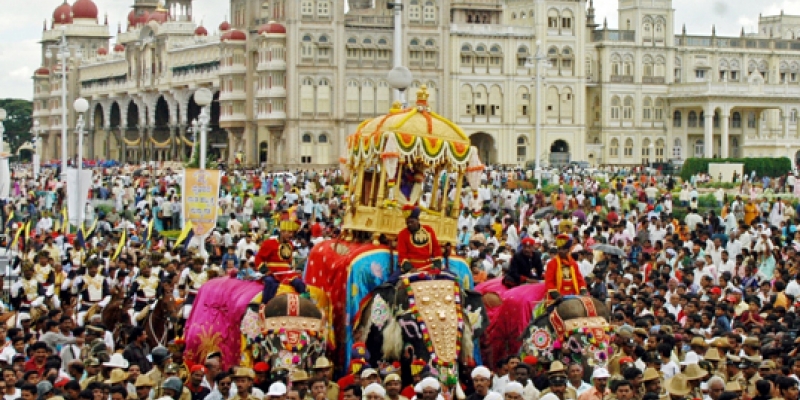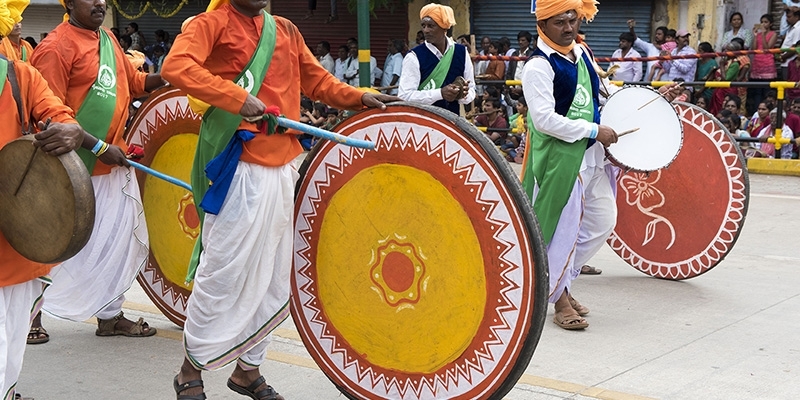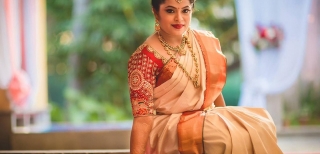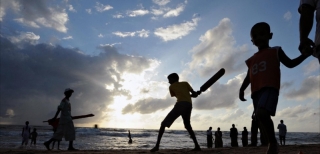Everything you always wanted to know about Mysore Dussehra
Here is your guide to this astounding celebration. Experience the rich history, vibrant celebrations, and cultural significance of Mysore Dussehra. A 10-day Mysore Dussehra festival when everything here dazzles like stars. The city is turned into an enormous fairground, with performances, dances, sporting demonstrations and cultural events running to cramped houses. Explore the grand processions, traditional performances, and festive activities that make this ten-day festival an unforgettable experience. Know more
Mysore Dussehra - Also known as ‘Nadahabba’ or state festival, The Mysore Dussehra is celebrated with unmatched levels of enthusiasm, splendor and magnificence in the region. The festival is so much associated with the local people, that even the Wadiyar Royal Family becomes an inhere part of the celebrations. The festival and related traditions exhibit the triumph of good over evil. It is also thought of as the day when Goddess Chamundeshwari, whose dwelling is atop the Chamundi Hills, demolished the demon king Mahishasura during an aggressive battle. Festivities include spectacular processions, cultural events, a grand exhibition and is attended by royals, invitees, politicians and tourists from all across the world.

Whether you’re in India or abroad, you must be a part of this colorful cultural extravaganza at least once in your lifetime.
Day 1:
The ceremony starts with Wodeyar royal couple carrying out a special puja to Goddess Chamundeshwari in the Chamundi Temple situated on the top of Chamundi Hill. This is followed by a special durbar at the Mysore Palace appeared by members of the royal family, special invitees, officials and the crowds. The palace is decorated with over 1 lac bulbs every evening for the entire festival.
Day 2:
One of the most amazing elements of the festival is the Dasara exhibition which begin during the Dasara and lasts for nearly two months. It is organized at the Doddakere Maidan right opposite to the Mysore Palace and features stalls selling articles like clothing, plastic and glassware, food stalls, stalls stressing the diverse departments of Government of Karnataka, and also a play area where people can take part in games and amusement rides.
Day 3:
This is a day when people celebrate local culture. Music and folk-dance events, handicraft exhibitions and a wrestling competition, involving wrestlers from all over the country, is organized in the Devraj Urs Stadium adjacent to the mela grounds, every Dussehra. A special food and film festival is also held at the same venue.
Day 4:
The most identifiable image of the Mysore dasara is maybe the image of the idol of Goddess Chamundeshwari, weighing 750 kgs, being transported in a march on top of an elephant, edged by Folk dancers, ornamented elephants, horses and camels. This is the Jumbo Savari parade and starts at the Mysore Palace and ends at Bannimantap where the Banni tree is revered.
Day 5:
The eventual celebration of the year’s Dussehra is the torchlight march or the PanjinaKavayatthu held at the Bannimantap estates on the borders of the city. During this parade, the festivities end with a massive firework show and a range of stunts performed by the Indian army. A laser show marks the final occasion of this parade.









